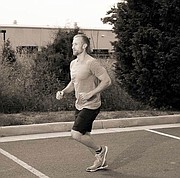Music is thumping, sweat is dripping and hearts are pounding. In a packed aerobic dance studio, students move in the name of health.
“There’s a push by the community to have aerobic and cardio programs, especially ones that start after 5 p.m.,” said Peter Selikowitz, director of the Potomac (Md.) Community Recreation Center, where the aerobic dance classes are held. “That has been a big shift in recent years, and it’s a shift we’re looking to make.”
Throughout the month of February, in honor of American Heart Month, health and fitness professionals are raising awareness about cardiovascular disease and the role of aerobic exercise in preventing it. While recent studies, including one by the Mid America Heart Institute, found that extreme exercise training and competing in endurance events can actually damage the heart, exercise is still the best prescription for a healthy heart.
“All aerobic activity has the potential to bring positive health benefits if the correct intensity [or] level of difficulty and duration are used.”
— Michelle Walters-Edwards, chair and associate professor, Health and Human Performance at Marymount University
“All aerobic activity has the potential to bring positive health benefits if the correct intensity [or] level of difficulty and duration are used,” said Michelle Walters-Edwards, chair and associate professor of Health and Human Performance at Marymount University in Arlington.
Some warning signs that an exercise program might be too intense include “constantly sore muscles, changes in mood, trouble sleeping, a decrease in appetite or feeling weak,” said Joel Martin, Ph.D., assistant professor of kinesiology at George Mason University. “Those are signs that you might be over-training.”
“Too much aerobic exercise can also cause soft tissue issues such as tendinitis and muscle strains. These are signs that the volume of exercise is too great for the muscles and tendons to deal with, and this should be modified,” said Walters-Edwards.
To hit the right target for intensity and duration, both Martin and Walters-Edwards advise checking the guidelines offered by the American Heart Association and the American College of Sports Medicine (ACSM) on how to achieve an optimum level of aerobic intensity. The formula calls for subtracting one’s age from 220 and multiplying that number by 0.5 for a beginner, by 0.69 for someone who exercises frequently for moderate intensity, and by 0.8 to 0.85 for vigorous intensity for those with significant experience with aerobic exercise.
Wear Red Day
Friday, Feb. 5
The American Heart Association is encouraging residents to show support for the fight against heart disease in women by wearing red on Friday, Feb. 5 — National Wear Red Day. Part of the American Heart Association's Go Red for Women movement, Wear Red Day focuses the attention on heart disease, the number one killer of women in America.
ACSM recommends 30 minutes of aerobic exercise three to five days each week at a moderate intensity. “If you can hold a conversation while exercising that is a safe intensity for beginners,” said Walters-Edwards.
The standards are based on “how fit you already are, your age and how accustomed your body is to the demands of cardio workouts,” said Walters-Edwards. “The more accustomed you are to working out aerobically the greater your endurance capacity will be.”
A beginner, says Walters-Edwards, might aim for a combination of walking and jogging to reach the 30-minute recommended daily minimum. This time can be broken down into two 15-minute sessions. “It is always a good idea to have at least one rest day per week with no exercise to support recovery, she said.
